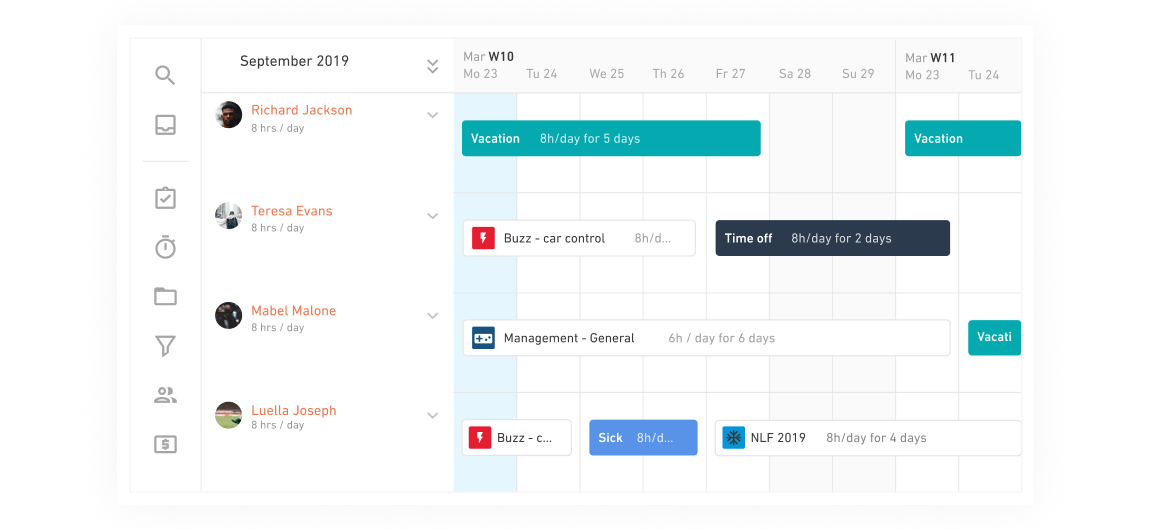The Difference In Macro And Micro-Planning

Have you ever shot a bow (think Katniss in The Hunger Games)?
If not, here’s a follow-up question: when you lift the bow and get ready to shoot, what do you think is the #1 most important thing you need to do? Here’s the answer—keep your eye on the target.
Sure, you need to grip the bow the right way. Yes, you need to make sure you draw the string hard. But unless you keep your eye on the target, none of that is going to matter.

When it comes to your agency, a similar principle can be put into play. Is day-to-day resource planning important to get the work done? Yes. Do you need to plan out tasks for your employees? Sure. But if you don’t have a big-picture view, the details won’t matter. That’s why macro-planning is much more important and effective than micro-planning. Here’s everything you need to know about these two concepts.
What Is Macro-Planning?
A macro plan is a very high-level description of a project. It’s short and concise, just hitting the important highlights—the things you really need to know in order to get the job done, with no unnecessary fluff and no down-to-the-minute scheduling.
Optimize Your Agency’s Project Planning
Get a high-level overview of your project progress with an all-in-one agency management software.
What Is Micro-Planning?
Micro-planning is, as you might expect, the opposite of macro-planning: it involves lots and lots of details and a very intense schedule to get the work done. For instance, a company that plans their tasks at the micro-level might lay out the day’s schedule like this:
- 10:10 to 10:50 — Claire writes a blog post
- 10:55 to 11:35 — Claire schedules social media posts
- 11:35 to 12:00 — Claire edits email newsletter
This is inefficient; it’s simply too hard to plan down-to-the-minute like this. Inevitably, Claire is going to get behind because it’s hard to predict how long certain tasks can take, and then her whole day (and your agency’s whole projects) will be thrown off. Micro-planning just doesn’t work.
Difference Between Macro and Micro-Planning
The Elgina Venue explains that macro to-do listing means looking at the bigger picture, whereas micro to-do listing means looking at the everyday. If you use a micro to-do list, you’re going to get too bogged down in the tiny details. With macro to-do listing, however, you get an overarching, broader view of what’s happening and are able to focus on big-picture goals.
At the end of the day, that’s why you’ll get more done with macro-planning—because you can hone in on your end goal. Once you write your macro to-do list, everything else that needs to be done will naturally fall into place.
Advantages of Macro-Planning
Macro-planning is almost always the right way to go because it helps you keep your end goal in your sights. Macro-planning doesn’t mean you do away with schedules completely (in fact, we love schedules — you can integrate your Google or Apple calendar with Productive); it just means that, instead of working from the ground up, you start with your biggest goals and break them down from there.
When it comes to macro-planning, think about casting a long-term vision — what your company wants to accomplish in a year, two years, ten years. It’s easier to start with this broad vision and then work your way backwards to define smaller monthly and weekly tasks rather than the other way around. Working backwards can ensure that each task you spend time on is truly moving you closer to your end goal. Think about your macro-goals and break them down into micro-focuses.
With macro-planning, you’re also able to batch process repeating tasks, so you can be more efficient with your time. If there are tasks you’re going to have to do over and over (such as writing a weekly blog post for your business), you can do them all at the same time. Writing four blog posts during the first couple of days of the month, for instance, will help you get in the blogging groove and write those posts quickly. Then you don’t have to think about blogging for another 30 days.
Disadvantages of Micro-Planning
Micro-planning is a form of micro-managing, which is something no employee wants to experience. Micro-managing sends a message to your employees that you don’t trust them enough to do the job on their own. It can weaken relationships and even destroy your team. Micromanagement also makes managers lose sight of the big picture. Employees can become dependent on micromanagement and everyone is going to get burned out. Those are a few of the many reasons why micro-planning is a bad idea.

Micro-planning and micromanagement are also not at all scalable. Someone at the company will have to spend every moment of the day going over the tiny details of what the team is doing. If you try to scale up, the team is either going to have to grow or to take on new duties — and either way, it’s just going to cause more work for everyone.
The Bigger Picture
To recap: Macro-planning is all about the bigger picture and the long-term vision. Micro-planning, however, is a surefire way to get bogged down in unnecessary details—meaning you might never achieve your end goal. To learn more, check out our guide on resource planning for agencies.
Focusing on macro-planning is a much better idea for your agency as you strategize how to get the best results. By doing so, you can focus on the big picture and hit your target every time.
Optimize Your Agency’s Project Planning
Get a high-level overview of your project progress with an all-in-one agency management software.
